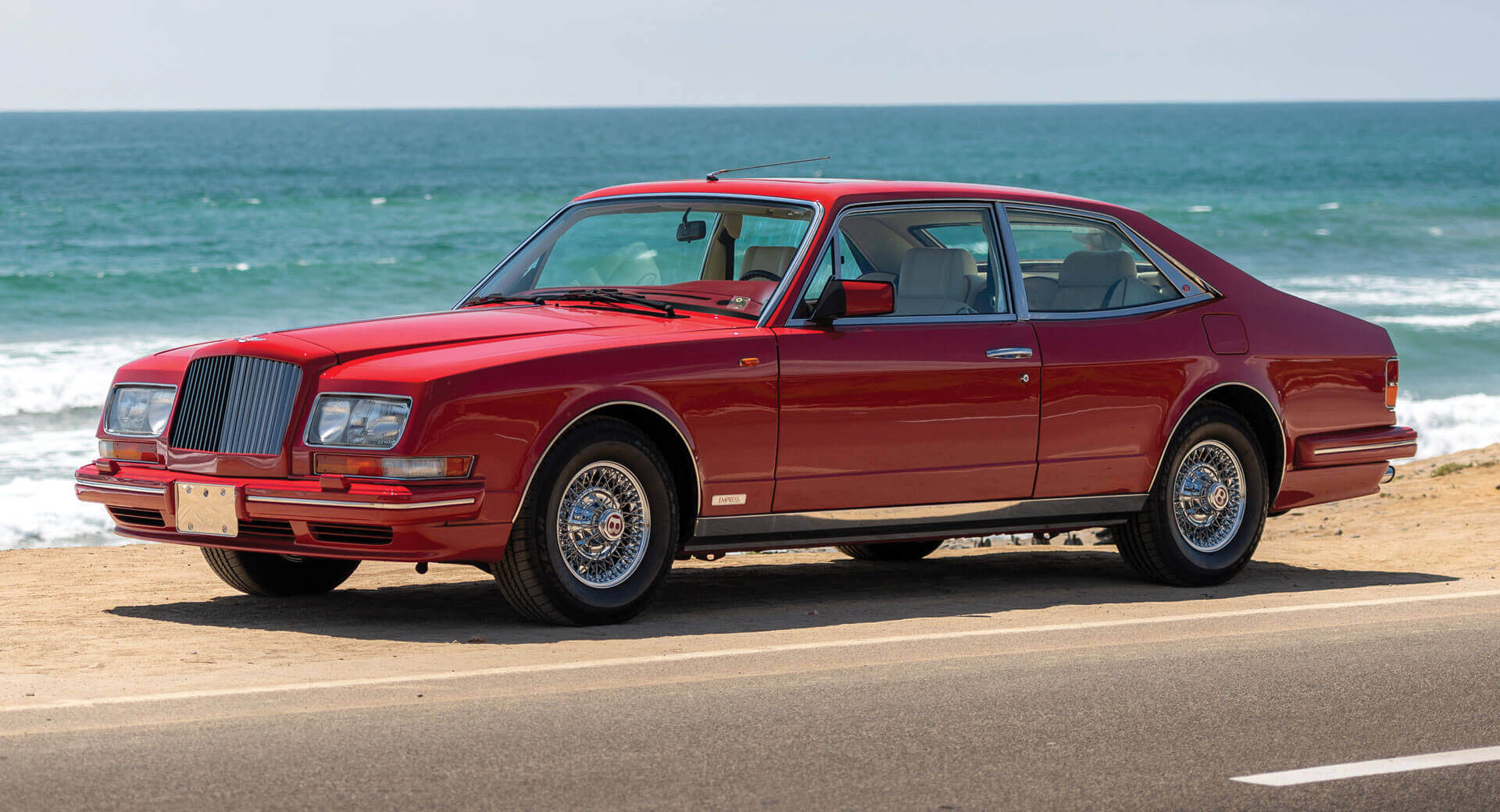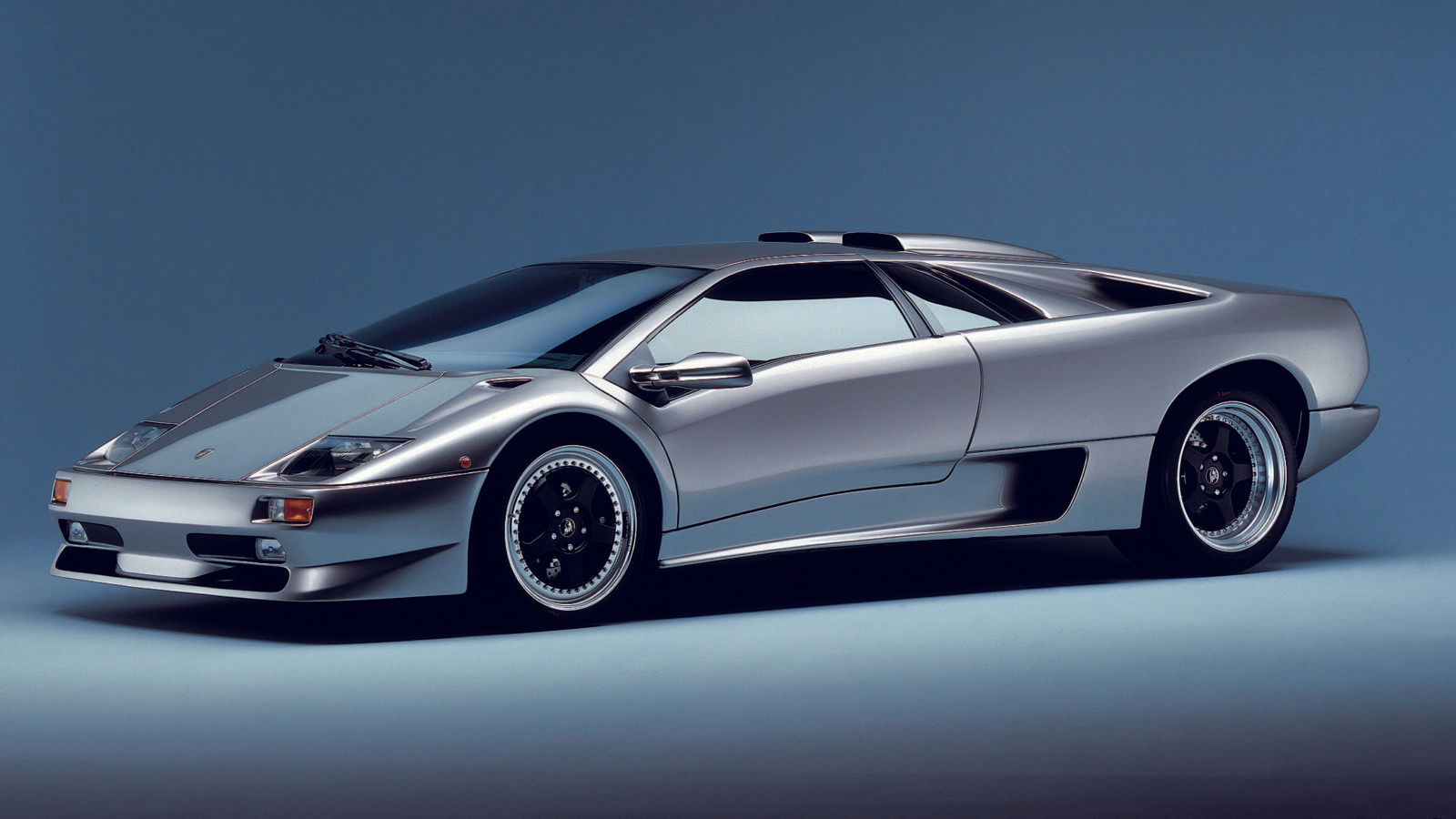
The 1990s marked a truly pivotal and electrifying era in the automotive industry. It was a decade where audacious technological leaps, captivating bold designs, and astounding engineering feats converged to create an unforgettable lineage of cars that are still deeply revered today. From cutting-edge hypercars that shattered performance benchmarks to race-inspired homologation specials born for the track, these rare and iconic vehicles unequivocally represent the pinnacle of 1990s innovation and raw performance. These machines weren’t merely modes of transport; they were profound statements of engineering prowess, relentlessly pushing the boundaries of what was thought possible on both the open road and the demanding race circuit. Many of them have, over time, become bona fide collectibles, with their values climbing to match their legendary status, some even slipping into the realm of complete unaffordability for many enthusiasts.
For automotive enthusiasts and discerning collectors alike, the profound allure of ’90s automotive excellence is simply undeniable. There’s a tangible magic in the way these vehicles blended mechanical precision with artistic flair, capturing the spirit of an era characterized by bold ambition. These cars possess a unique charm that contemporary vehicles often struggle to replicate, a rawness combined with a pioneering spirit that makes them exceptionally desirable. They offer a direct connection to a period where digital interfaces were minimal, and the driving experience was pure and unadulterated.
In this in-depth, authoritative dive, we’ll embark on a thrilling journey through the first half of a meticulously curated selection of these legendary vehicles. Prepare to immerse yourself in authoritative insights, detailed technical specifications, and expert analysis, designed specifically to appeal to true car enthusiasts and anyone seeking comprehensive, in-depth knowledge of the automotive marvels that profoundly shaped a generation. We’ll explore what made each of these machines an undisputed legend, delving into their power, their precision, and their enduring impact on the automotive landscape.
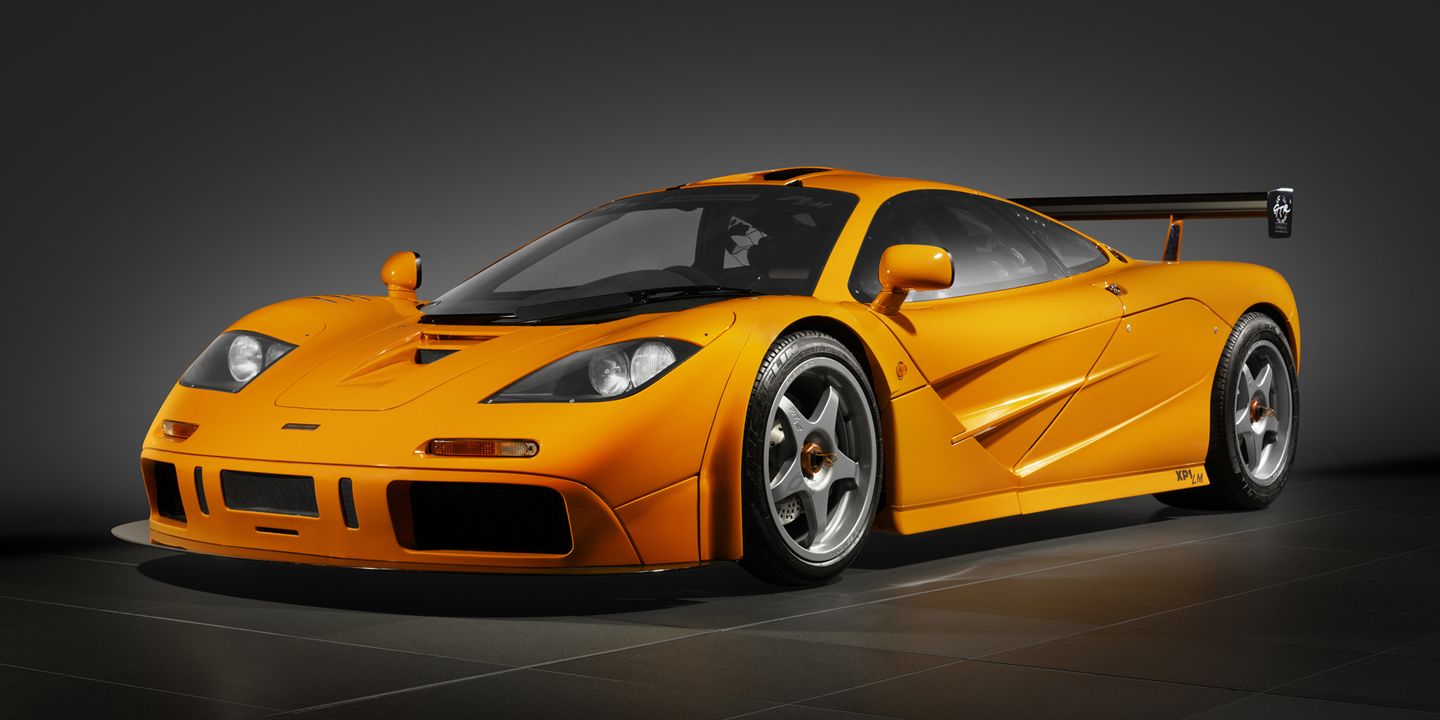
1. **McLaren F1 LM**: The McLaren F1 LM didn’t just redefine hypercars; it authored a new chapter in their very existence. This formidable machine was powered by a naturally aspirated V12 engine, a masterpiece of engineering that effortlessly produced an astounding 627 horsepower. This power output was not just impressive for its time; it was a figure that commanded immediate respect and set a new, towering benchmark for what a road car could achieve in terms of sheer, visceral performance. Its top speed of 240 mph was a testament to its aerodynamic design and incredible power-to-weight ratio.
What truly cemented the F1 LM’s place in automotive lore was its extreme exclusivity. Only five LM versions were ever meticulously produced, making it one of the rarest and most intensely coveted cars of the entire decade, and indeed, of all time. This ultra-limited production run immediately bestowed upon it a mythical status among collectors and enthusiasts worldwide. Beyond its rarity, the F1 LM boasted groundbreaking features such as a carbon fiber monocoque chassis, a revolutionary material choice for its time, ensuring unparalleled rigidity and lightness.
Further enhancing its unique appeal was its distinctive central driving position, a design choice borrowed directly from Formula 1 racing that provided an unparalleled sense of control and immersion for the driver. This meticulous attention to detail, combined with its limited production and record-breaking performance, firmly established the McLaren F1 LM as not just a car, but a bona fide automotive legend and a priceless collectible, commanding astronomical figures in today’s market. It remains a symbol of pure, uncompromised automotive excellence.
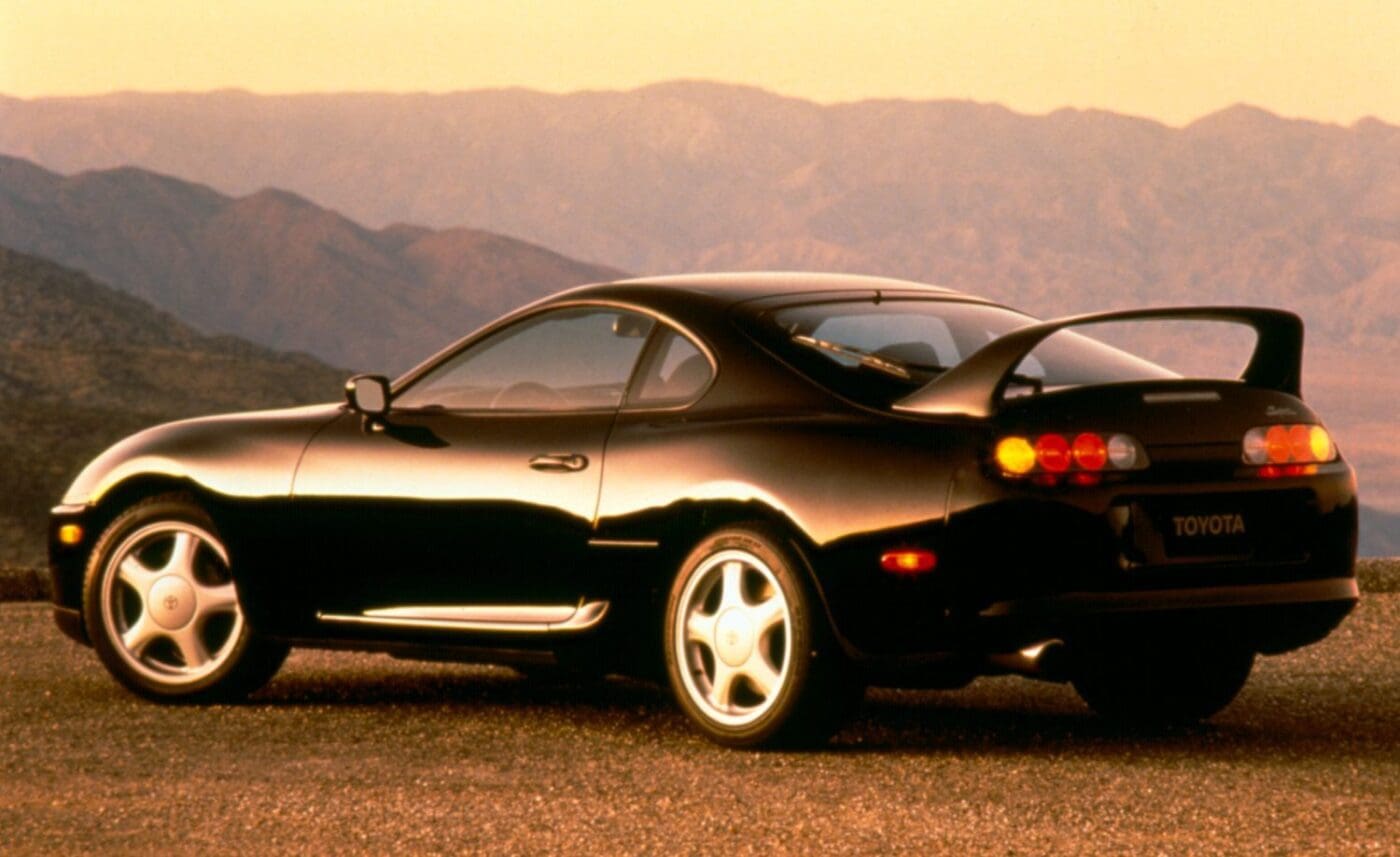
2. **Toyota Supra Twin Turbo MKIV**: The Toyota Supra MKIV, particularly in its Twin Turbo guise, rapidly ascended to become an undeniable icon within Japanese tuner culture, leaving an indelible mark on the global automotive scene. At the heart of its legend lay the phenomenal 2JZ-GTE engine, a 3.0-liter twin-turbo inline-six that quickly gained a reputation for its massive inherent strength and seemingly endless tuning potential. This engine’s robust design meant it could handle immense power outputs on its stock bottom end, making it the darling of performance builders and drag racers worldwide.
Born out of Japan’s economic Bubble Era, the A80 Supra was a true technological marvel of its time. It featured a sophisticated, albeit complex, sequential twin-turbo system that delivered power in a remarkably linear fashion, enhancing both street driveability and track performance. The car’s sleek, swoopy bodywork, often accentuated by its famously skyscraping rear wing, made an immediate and bold statement wherever it went, contributing significantly to its distinctive and timeless styling. Its rear-wheel-drive (RWD) layout further solidified its appeal among enthusiasts who valued pure driving dynamics.
Decades of Supras, and the 2JZ engine in general, making legendary power and proving their exceptional durability on stock internals, have secured the MKIV a permanent place on every enthusiast’s short list. Its resurgence in public awareness, notably due to its prominent feature in the original “Fast and Furious” movie, has only amplified its desirability. Today, it’s the stock, unmodified examples of the twin-turbo models, some commanding prices upwards of $175,000, that are considered the most collectible and highly sought-after.
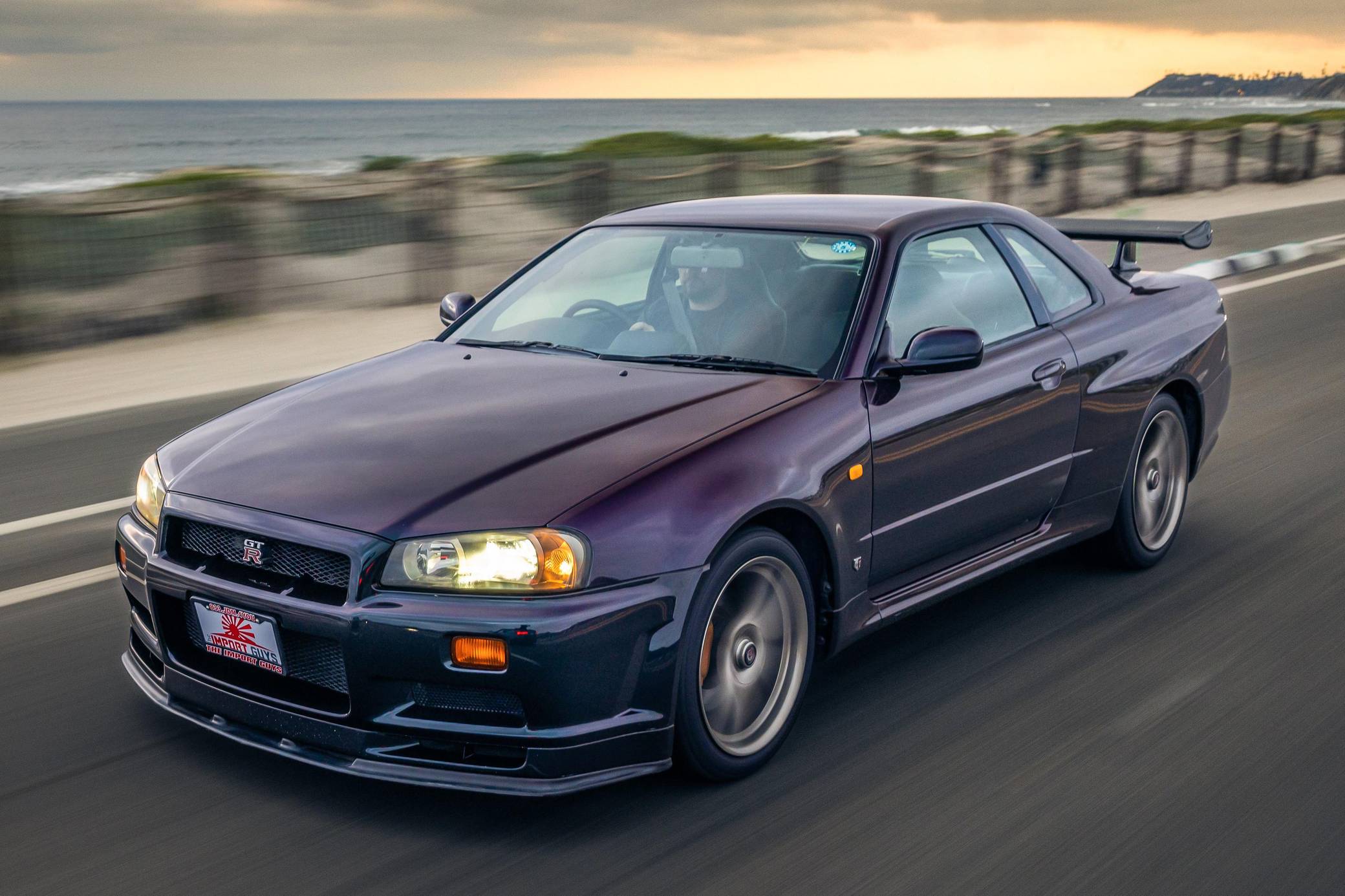
3. **Nissan Skyline GT-R R34 V-Spec**: Reverently known as “Godzilla” for its sheer dominance and formidable presence, the Nissan Skyline GT-R R34 V-Spec captivated both motorsports and popular culture during the 1990s. This automotive powerhouse set groundbreaking new standards for performance, largely thanks to its highly advanced ATTESA E-TS Pro all-wheel-drive (AWD) system and the legendary RB26DETT engine. These two components worked in harmonious concert to provide astonishing levels of grip, acceleration, and handling prowess, making the R34 a force to be reckoned with on any circuit or road.
Under its aggressively styled hood resided the iconic 2.6-liter twin-turbo inline-six RB26DETT engine. This powerplant was engineered for extreme durability and high-revving performance, capable of producing impressive horsepower and torque figures that belied its factory rating due to Japan’s ‘gentlemen’s agreement’. The engine’s reputation for robustness and tunability further cemented the R34’s status as a top-tier performance car, appealing to those who demanded nothing less than peak automotive engineering.
Beyond its mechanical brilliance, the R34 V-Spec was characterized by its unmistakably aggressive styling, featuring sharp lines, a muscular stance, and an iconic rear wing that immediately distinguished it from its peers. The limited V-Spec editions, in particular, offered enhanced aerodynamics and a stiffer suspension, making them even more desirable to collectors and driving purists. This combination of motorsport heritage, cutting-edge technology, and a commanding aesthetic ensures the Nissan Skyline GT-R R34 V-Spec remains one of the most celebrated and sought-after Japanese performance cars of its era.
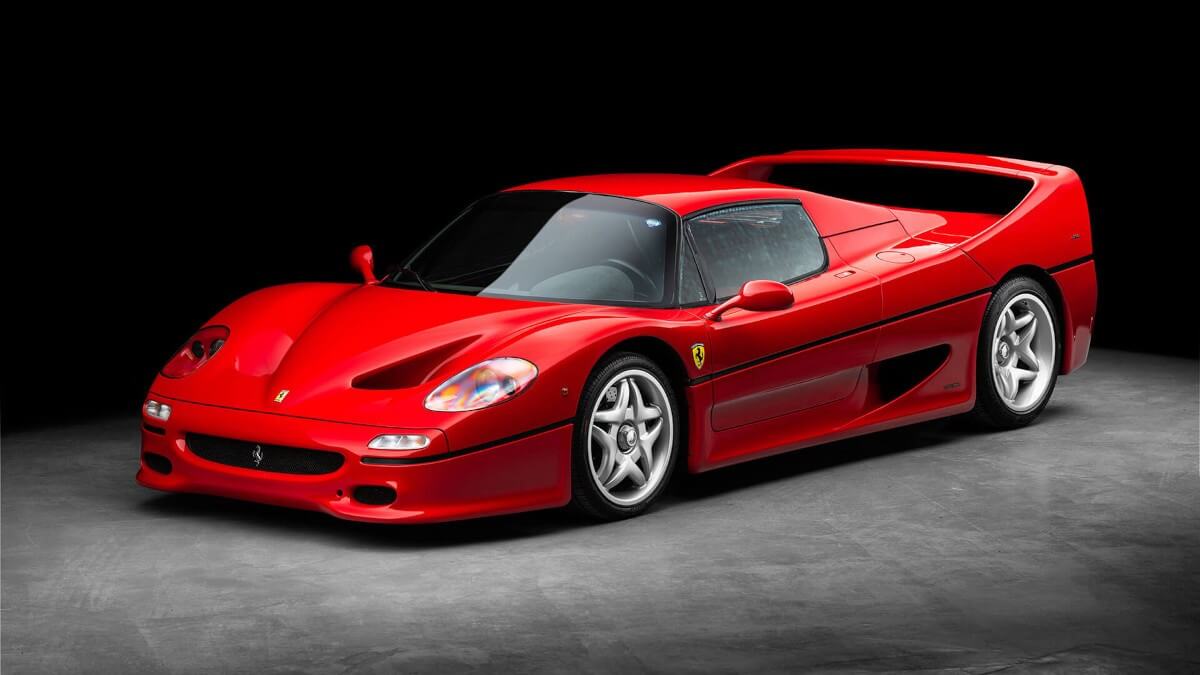
4. **Ferrari F50**: The Ferrari F50 was a magnificent embodiment of the Maranello marque’s commitment to pushing the boundaries of road-going performance, seamlessly blending Formula 1-derived technology with breathtaking road presence. This open-air supercar dream offered a driving experience as close to a Formula 1 car as legally possible on public roads. Its naturally aspirated V12 engine, a direct descendant of Ferrari’s F1 racing engines, provided an orchestral symphony of power and sound that was simply unparalleled.
At its core, the F50 was engineered for uncompromised performance, featuring a high-revving 4.7-liter V12 engine capable of delivering a staggering top speed of 202 mph. This engine was not merely powerful; it was designed to be a stressed member of the chassis, directly bolted to the carbon fiber monocoque, which was a revolutionary approach for a road car. This innovative design contributed significantly to the car’s overall structural rigidity and lightweight nature, enhancing its responsiveness and agility on the tarmac.
The F50’s striking design, characterized by aggressive aerodynamics and a purposeful aesthetic, perfectly complemented its race-bred mechanicals. The inclusion of a targa roof provided the exhilarating option of open-air driving, allowing occupants to fully immerse themselves in the raw, unadulterated sound of the F1-inspired V12. With its profound connection to Formula 1, its lightweight design, and its stunning performance, the Ferrari F50 stands as a testament to Ferrari’s engineering prowess and remains an exceptionally coveted supercar from the 1990s.
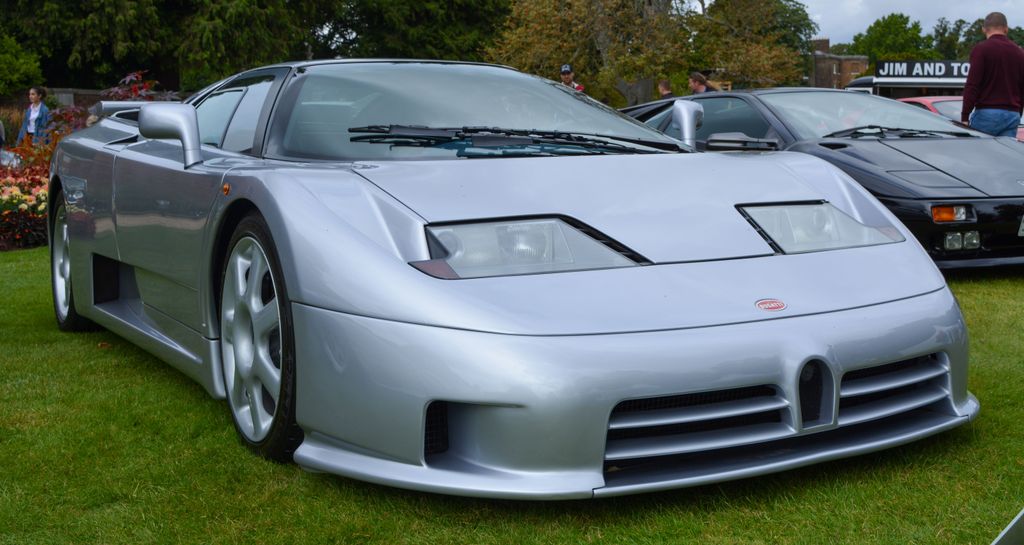
5. **Bugatti EB110 Super Sport**: In the 1990s, Bugatti dramatically returned to prominence with the introduction of the EB110 Super Sport, a truly remarkable technological marvel that heralded a new era for the legendary marque. This extraordinary vehicle pushed the boundaries of automotive engineering, distinguishing itself with a groundbreaking quad-turbocharged V12 engine and extensive use of advanced carbon fiber construction, establishing a new benchmark for hypercar performance and luxury.
The heart of the EB110 Super Sport was its formidable 3.5-liter quad-turbo V12 engine. This complex and incredibly powerful powerplant was a testament to Bugatti’s no-holds-barred approach to performance, enabling the car to achieve an astounding top speed of 217 mph. The use of four turbochargers ensured relentless power delivery across the rev range, translating into breathtaking acceleration and an exhilarating driving experience that few cars of its era could match.
Beyond its immense power, the EB110 Super Sport was a pioneer in material science, utilizing cutting-edge carbon fiber construction for its chassis. This not only contributed to its impressive lightness but also provided exceptional structural rigidity, which was crucial for managing its colossal power output. Coupled with its advanced all-wheel-drive (AWD) system, which provided incredible traction and stability, the Bugatti EB110 Super Sport solidified its position as a true icon of 1990s automotive innovation, a car that seamlessly blended extreme performance with pioneering engineering.
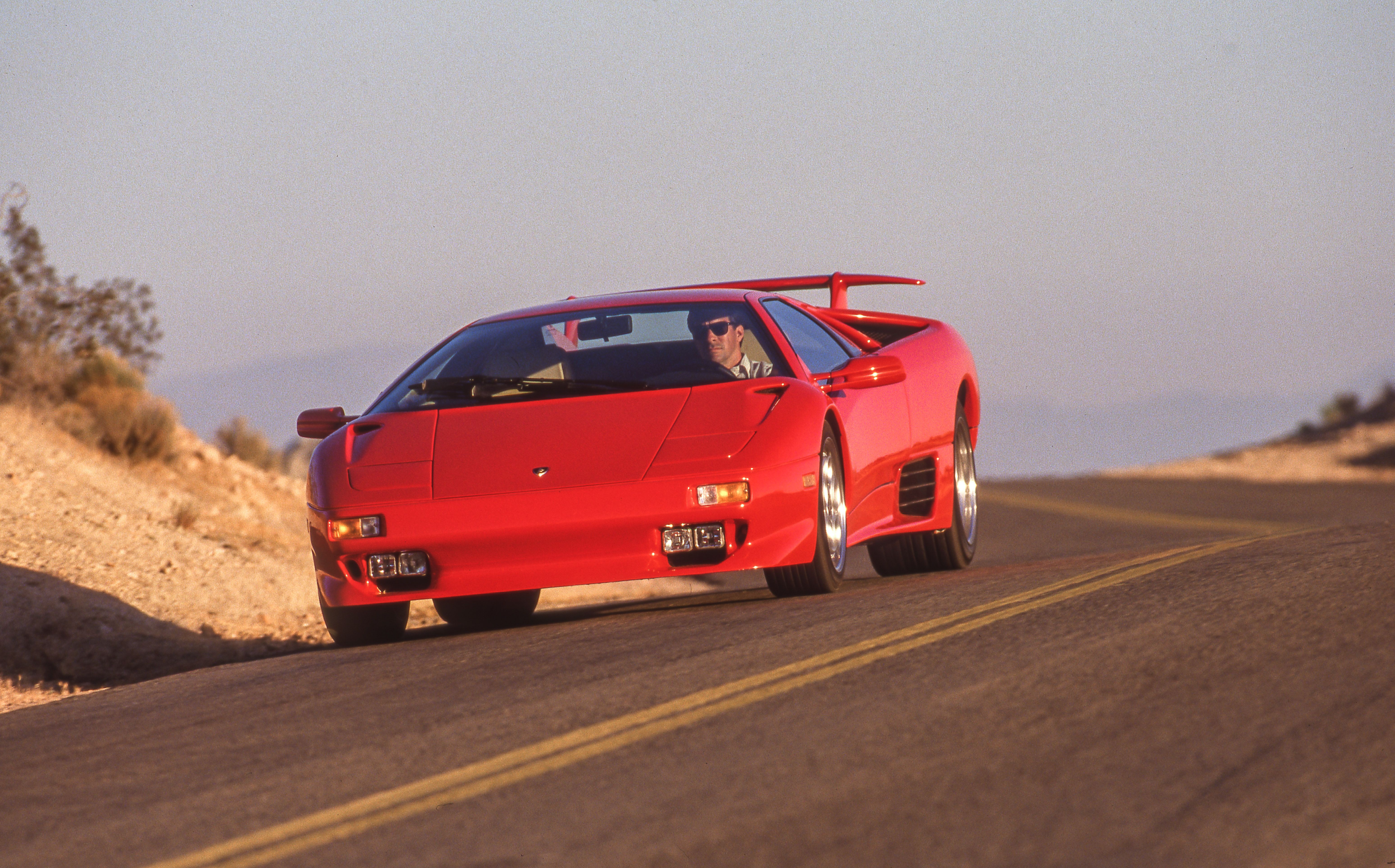
6. **Lamborghini Diablo VT**: The Lamborghini Diablo VT stood as a quintessential representation of 1990s supercar excess and undeniable allure, perfectly blending audacious Italian styling with immense performance. Its dramatic presence was underscored by a mighty 5.7-liter V12 engine, a powerplant synonymous with Lamborghini’s heritage, which endowed the car with incredible raw power and a spine-tingling exhaust note that captivated enthusiasts worldwide. This formidable engine provided the car with its impressive 202 mph top speed.
Crucially, the ‘VT’ in its name stood for ‘Viscous Traction,’ indicating the integration of an all-wheel-drive (AWD) system. This innovative feature marked a significant evolution for Lamborghini, providing enhanced grip and stability, particularly when harnessing the V12’s prodigious output. The AWD system made the immense power more manageable, allowing drivers to exploit the car’s full potential with greater confidence, a stark contrast to the often more challenging rear-wheel-drive supercars of the era.
Perhaps one of the most iconic and visually striking features of the Diablo VT, which undeniably added to its legendary allure, was its signature scissor doors. These instantly recognizable doors became a hallmark of Lamborghini’s exotic design, contributing to its bold Italian styling and ensuring that the Diablo VT commanded attention wherever it appeared. Its combination of brute force, advanced technology, and theatrical design cemented the Lamborghini Diablo VT as a highly coveted and unforgettable supercar of the 1990s, a true beast with unparalleled road presence.

